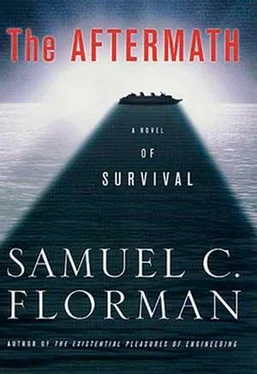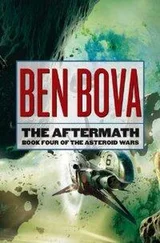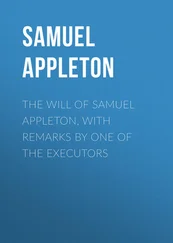Samuel Florman - The Aftermath
Здесь есть возможность читать онлайн «Samuel Florman - The Aftermath» весь текст электронной книги совершенно бесплатно (целиком полную версию без сокращений). В некоторых случаях можно слушать аудио, скачать через торрент в формате fb2 и присутствует краткое содержание. Город: New York, Год выпуска: 2001, ISBN: 2001, Издательство: Thomas Dunne books, Жанр: sf_postapocalyptic, на английском языке. Описание произведения, (предисловие) а так же отзывы посетителей доступны на портале библиотеки ЛибКат.
- Название:The Aftermath
- Автор:
- Издательство:Thomas Dunne books
- Жанр:
- Год:2001
- Город:New York
- ISBN:0-312-26652-9
- Рейтинг книги:5 / 5. Голосов: 1
-
Избранное:Добавить в избранное
- Отзывы:
-
Ваша оценка:
- 100
- 1
- 2
- 3
- 4
- 5
The Aftermath: краткое содержание, описание и аннотация
Предлагаем к чтению аннотацию, описание, краткое содержание или предисловие (зависит от того, что написал сам автор книги «The Aftermath»). Если вы не нашли необходимую информацию о книге — напишите в комментариях, мы постараемся отыскать её.
The Aftermath — читать онлайн бесплатно полную книгу (весь текст) целиком
Ниже представлен текст книги, разбитый по страницам. Система сохранения места последней прочитанной страницы, позволяет с удобством читать онлайн бесплатно книгу «The Aftermath», без необходимости каждый раз заново искать на чём Вы остановились. Поставьте закладку, и сможете в любой момент перейти на страницу, на которой закончили чтение.
Интервал:
Закладка:
Alf Richards spoke for the majority when he asked, “What happened to iron and steel?”
Dr. Nagasaka smiled. “All in good time. We will get to iron and steel. But the fact is that we cannot even begin to plan a technological future without talking about controlled heat.”
Seeing the puzzlement on the faces of his audience, the speaker continued: “Just consider: If there is a single factor that enabled the human race to move out of the Stone Age and embark on its journey toward technical mastery, one must say it was the ability to create intense fires. By intense fires I do not mean simple combustion, but rather infernos hot beyond the imagining of early peoples. Ordinary flame, burning in the open air, is good mainly for keeping warm, cooking, and scaring away animals. Granted, learning how to ignite and control such flame was a vitally important step toward advanced civilization. Yet, to garner metals from their hiding places in the rocks of the earth, fiercely hot fires were required, fires contained in blazing furnaces and brought to a feverish pitch by force-feeding them with air.”
Members of the group nodded but shrugged and shifted in their seats, indicating a grudging understanding mixed with impatience. Nagasaka, unperturbed, continued.
“Human beings have been hardening clay pottery in heated, enclosed spaces for more than eight thousand years. But the heat suitable for baking clay is nowhere near as intense as that needed to work metals. To melt copper, we require a temperature of 1,083 degrees Centigrade. And that is nothing compared to iron, which has a melting point of 1,535 degrees Centigrade. So, you can see that we have to give a lot of thought to heat—how to create it and how to contain it.
“Our engineers have with them many plans and specifications to follow when we are ready to build our furnaces. But we need to address the question of which locally available materials can be used to make the refractory bricks with which to line these furnaces. In addition to withstanding intense heat without cracking, these materials must also be able to resist such destructive influences as rapid changes in temperature, abrasion by dust-bearing gases, and erosion by molten metals. Of course, the bricks or tiles that we need for building kilns have themselves to be manufactured in kilns. In order to make a kiln, a kiln is required.”
Several subcommittee members nodded thoughtfully. It was clear that in practically every one of their endeavors they would be running into this Catch-22 of technological progress.
“But,” Ichiro said, “we escape the predicament by starting with the most primitive oven, simply a hole in the ground with walls and roof made of stones and mud—or perhaps of crude bricks made of clay dried in the sun. Then in this primitive oven we make good, solid, fired bricks, using clay mixed with straw. These bricks in turn enable us to make a more advanced oven in which we can make superior bricks, and so forth, onward and upward. All the while we seek to find ever better clay and superior admixtures—alumina, silica, magnesite, dolomite, and the like.”
Dr. Nagasaka thought that he was making good progress; but he had underestimated the effect that the mention of bricks would have on the subcommittee chairman.
“Dammit, Ichiro,” Alf Richards errupted, waving his coffee cup in the air, “we can’t think about fancy bricks for kilns when we haven’t even talked about ordinary bricks for construction! That’s one of the things I was going to bring up next. We need to build walls for our houses, foundations for our factories, and piers for our bridges. We’ve talked about lumber and bamboo, but that won’t take care of all our needs. If we can find some decent clay—and I’ve been told there’s plenty of good stuff around—we could start making bricks pretty darn quick.”
Ichiro smiled and bowed, and thereupon gave a demonstration of how the Japanese, in group enterprise, work assiduously toward consensus. Richards also showed that, when he so chose, he could be an eminently congenial negotiator. After about a half hour’s further discussion, a deal was struck. The Joint Planning Subcommittee authorized the establishment of two factories to make bricks.
These were to be located near deposits of clay, and also near a supply of the wood needed for fuel. Several potential sites were suggested, and a small panel of specialists was authorized to select the two that seemed most suitable. At both plants the main product was to be a regular brick for use in construction. But at one of the installations, ten ceramics experts plus fifteen helpers would work exclusively on development of materials suitable for building furnaces. In pursuit of this goal, they would be given special facilities, along with significant operational authority.
The basic brickmaking operation is not overly complex; but it requires muscle power and efficient organization. The clay has to be dug out of the ground, then worked into a wet mash that can be mixed with straw and put into molds. In an alternative method, called the stiff-mud process, the clay is mixed with just enough water to make it plastic, and then it is forced through a rectangular die, coming out in the form of a bar which is cut into brick-size pieces. In either case, a crew then attends to the baking, or firing, in a kiln. The subcommittee, after some rough-and-ready man-hour calculations, decided to assign one hundred workers to each plant.
“One hundred musn’t become a magic number,” one of the committee members piped up. “Let’s not use it hastily to solve every problem that comes along.”
Richards responded: “Look, in the absence of a detailed estimate, this is a convenient, functional unit for our preliminary planning. We use a figure that reflects the order of magnitude that seems to make sense. Call it ‘the One Hundred Strategy,’ if you like. The number of personnel assigned to each activity will, in the course of events, be subject to modification. The important thing is that we get the damned work started.”
The group concurred, and then commissioned a third plant—also with a complement of one hundred—to make other fired clay products such as pipes, floor tiles, roof tiles, and cooking utensils. Finally, they authorized a fourth operation, with fifty workers, to produce cement, which is a blend of clay and limestone also fired in a furnace. After cement has been manufactured, it can be mixed with sand, crushed stone, and water to make concrete. Or it can be mixed with lime, sand, and water, to provide brick mortar.
By the time these decisions were finalized, it was almost noon. Alf Richards was delighted with the morning’s work. Brick, concrete, and mortar, plus a variety of tile products; just thinking of these materials made the crusty old hardhat feel like celebrating.
Ichiro Nagasaka also was satisfied. He had accomplished his immediate objective. The manufacture of suitable refractory materials was one of those items that needed someone to serve as champion, or else it might have been ignored. Then, at some future point, everyone would have regretted the oversight.
After lunch, Alf reconvened the meeting and asked Dr. Nagasaka whether he did not want to go on to the larger issue of metals, especially the manufacture of steel.
Ichiro said, “Oh no. Let us move on to other things.” This gave the impression that he did not want to dominate the proceedings with his personal concerns. The strategically minded members of the subcommittee read it another way, and they were right in their suspicion. Knowing that there was absolutely no chance of metals being overlooked, Nagasaka contemplated an end game in which this subject would become the final agenda item, and thus the ultimate focus of attention.
If not metals, then what next? Richards posed the question, and at first there was silence.
Читать дальшеИнтервал:
Закладка:
Похожие книги на «The Aftermath»
Представляем Вашему вниманию похожие книги на «The Aftermath» списком для выбора. Мы отобрали схожую по названию и смыслу литературу в надежде предоставить читателям больше вариантов отыскать новые, интересные, ещё непрочитанные произведения.
Обсуждение, отзывы о книге «The Aftermath» и просто собственные мнения читателей. Оставьте ваши комментарии, напишите, что Вы думаете о произведении, его смысле или главных героях. Укажите что конкретно понравилось, а что нет, и почему Вы так считаете.












